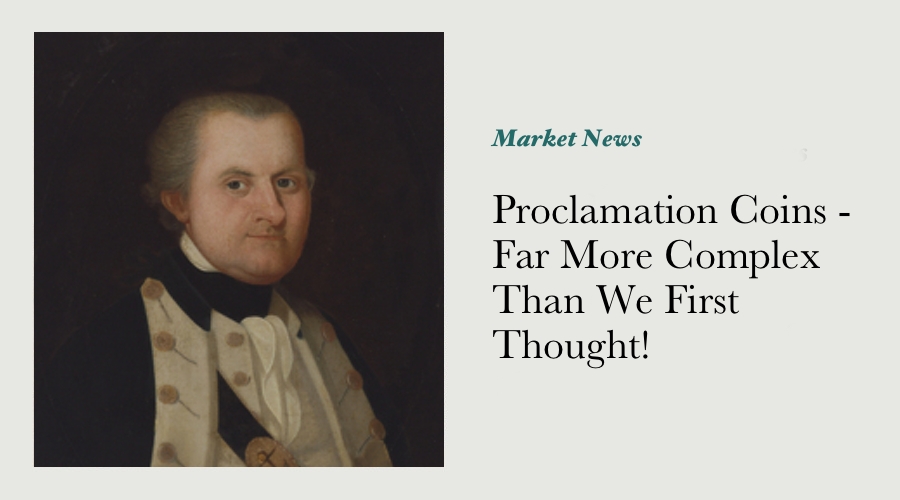Proclamation Coins - Far More Complex Than We First Thought!

A lot of us with an interest in the coins that were used in commerce during Australia's earliest years have a fairly narrow understanding of the 11 coins that were listed in Governor King's proclamation of 1800 - we see each coin as being fairly straightforward, which it turns out isn't quite the same way that other collectors around the world view them!
Just one of each denomination was listed by Governor King, and furthermore they are so complex it generally takes some time for the average Australian numismatist to come to terms with them. As a result, Australian collectors tend to view each of the 11 coins listed by Governor King as being "type" coins - that is, they're seen as being a representation of all of the coins of that type, regardless of how many different varieties there may be.
An analogy that might make this situation clearer is to consider the case of the Australian penny series - although pennies were struck over a period of approximately 53 years (1911 to 1964), discerning collectors are able to distinguiish between at least 92 different kinds of Australian pennies, whether they be different dates, mintmarks of the same date, or major die varieties. A 1930 penny and a 1936 penny are rightly regarded as widely different creatures by Australian collectors, however to a collector with a much more limited appreciation of the series, the 1936 penny will serve essentially the same purpose as the 1930 penny - it represents the King George V type.
A case in point regarding this divergence of views can be found in the results achieved by a recent auction in New York, conducted by Heritage Auction Galleries and one that included several gold Portuguese Brazilian 12,800 reis coins. These impressive gold coins (some 38mm in diameter) were the most valuable decreed by Governor King as having an official status in New South Wales, and are as keenly sought by collectors today as they were by Australia's first businessmen. This is where the similarity ends however - one of the coins (a 1731/0 overdate from the Minas Gerais Mint) mentioned made a fairly standard hammer price of US$4,888, or approximately A$5,624 at the time I write this.
The second coin (a 1731 dated example, this time from the Rio Mint) made a substantially different figure - the final hammer price was US$103,500, which translates into approximately A$119,100 at present. While we shouldn't be surprised that a dedicated collector would rate one coin from a particular series as being 20 times more desirable than another coin that looks essentially the same, I have to confess that this result did come as something of a shock to me!
The lot description by Heritage gives us a full explanation for the technical differences between the two coins: "The 1731 Dobra from the Rio mint with the so-called "Italic Shield" is extremely rare with only a handful of pieces known to exist, most of which are in private museums. As a short-lived type, the 12800 Reis were struck at the Rio de Janeiro mint from 1727 to 1733. Very late in 1731, the Dobra's reverse was redesigned to feature a new polygonal shield to substitute the circular (oval) one which had been used only on "R" mint coins up to that year. Gomes (#138.10) simply lists this coins as "rare". This type has been absent from all major Brazilian/Portuguese sales of the last two decades including Norweb. This piece is in nicer condition than the one in the "Espirito Santo Collection"--the most important collection ever assembled of Portuguese and Portuguese colonial coins and the only other piece found in our research."
So there we have it - there is far more to the Australian colonial coinage series than we initially thought!
Some time ago, I resolved to put together a spreadsheet that listed all of the different date and mintmark varieties of each of the coins listed in Governor King's proclamation. Whether I achieved that is another thing altogether!
if you have an interest in finding out just how complex this series can be for the collector determined to pursue it, you're welcome to download a copy from this link. I haven't revisited it for quite some time, so the figures it includes as a guide to price should be taken with a liberal grain of salt, and I'm quite certain there are a number of varieties I haven't been able to locate from the reference books I accessed in order to compile the list.
I'll appreciate any feedback you may send my way, do let me know what you think of it so far. If anything, it's a pretty good indicator of why we should be paying a little more attention to the design nuances of the coins in our proclamation & colonial coin sets.